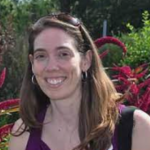“The lectures are very well structured so that student engagement is a priority, and the clicker questions and in-class worksheets are good benchmarks to gauge your level of understanding. I also think that the amount of resources provided really help put students in a place where they can succeed, from the practice problems to the recorded lectures to the in-class problem sessions.”
“I liked the diversity of the concepts and the interactivity of the class. I also appreciated the problem sets to get in the mindset of the types of questions we meet encounter on exams.”
“The way this course is logistically set up (with pre-lectures, lectures, in-class worksheets, daily homework, and group problem solving sessions) is designed to keep you on top of work and all the content and assignments are relevant. It is a lot of material, but the course is set up in a way to make you successful with mastering and understanding the material. The best large science course at Hopkins.”




